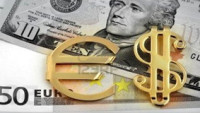 USD Outlook
USD Outlook
As expected, Trump’s presidential election victory saw significant upside support for the greenback. This culminated in the US Dollar Index index topping out just shy of 105.50 yesterday, before traders began to pare back some dollar length. That process has continued this morning too, as markets continue to assess the prospects of the new administration and gear up for a Fed meeting later today.
On the latter point, we expect a 25bp cut from the FOMC, in line with market consensus. For us, the major focus for this meeting will be on any forward guidance offered by Chair Powell and Co. If Trump follows through with his policy commitments, this will entail a significant rise in price pressures, which all else being equal, should mean higher rates.
But, if a more hawkish rate path is signalled explicitly, this would leave the Fed open to accusations of political bias from the incoming administration. As such, we think there are two options on the table for the FOMC. First, keep cutting rates as expected, before doing an about-turn when the data shows signs of heating up.
Second, signal a wait-and-see approach to policymaking, with a pause either in December or Q1 2025. This latter approach would be our favoured option – which if realised could mean that after today, the Fed’s next rate move might well be a hike, not a cut. Either way though, we are inclined to think that the outcome of the presidential election leaves market implied policy rate expectations looking too dovish, suggesting upside risks for the dollar.
EUR/USD View
The euro was amongst the worst-performing G10 currencies versus the dollar in the aftermath of the US presidential elections, ultimately shedding -1.84% yesterday, a performance only beaten by the -1.95% slide seen for the Japanese yen. That said, this was still not sufficient to see EUR/USD consolidate below 1.07, with this level now looking like a temporary floor for the pair.
How long this might last, however, could well depend on domestic political considerations. Specifically, news overnight that German Chancellor Olaf Shulz dismissed his finance minister has triggered speculation that the German government will collapse. With further political turmoil in Europe added to developments in the US, this backdrop should pose further downside risks for EURUSD in the coming weeks.
GBP/USD
While sterling joined the rest of the G10 complex in giving up ground to the dollar yesterday, the pound’s performance was middling, as we had anticipated. In part, this reflects the UK’s relative insulation from tariff risks when compared to some other G10 economies, most notably the eurozone.
But also, we think this reflects what is likely to be a relatively slow easing path from the BoE considering the UK government’s newly unveiled spending plans. We expect a signal confirming this later today from the MPC, who are set to deliver a rate decision at noon GMT. While a 25bp looks like a done deal, a hint that the Bank is moving to a once-per-quarter easing pace should offer some upside support for sterling if unveiled.
CAD/USD
The loonie finished at the top of the G10 pack yesterday, and was outperformed by only TWD, BRL, and MXN amongst the majors. The last two of these actually posted outright gains against the dollar, in contrast to the -0.83% fall for USDCAD. That said, we think markets are under-pricing the risk that Trump’s tariff policies could pose to some of these economies if implemented, with Canada looking particularly exposed.
Domestic growth is weak, and about to suffer a negative shock from a large cut to immigration. Marry this with a sharp rise in the implied tariff rate on Canadian exports, and the risk of recession looms large. Moreover, unlike many other countries, Canada lacks alternative destinations for many of its products.
After all, is rather hard to move the roads, railways, and pipelines that currently carry many Canadian exports, and the country is separated from other markets by either the Atlantic or the Pacific Oceans. While this is unlikely to result in a sharp readjustment higher for USDCAD in the near future, we continue to expect broad loonie underperformance over the next year as this new reality is slowly but steadily priced by markets.













